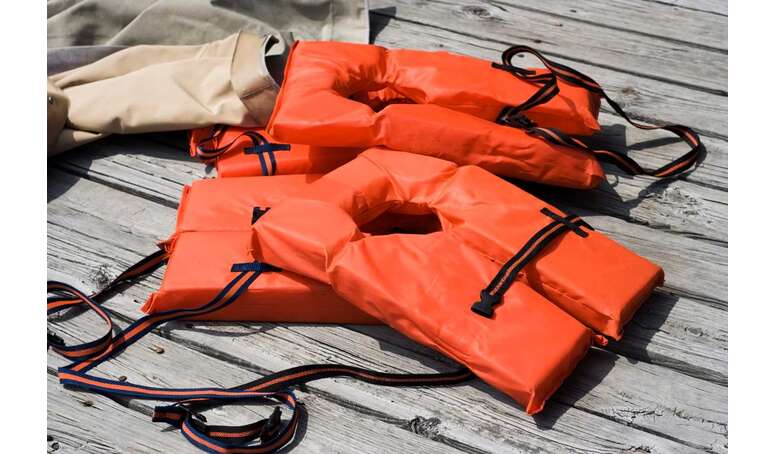What to Look for When Choosing the Best Life Jacket
Date Posted: 30 December 2021

Boating and water activities are some of Australia’s favourite pastimes; our waterways are beautiful but sometimes unpredictable and dangerous. Before you take a trip out on the water, consider your safety needs, especially when buying a life jacket.
Choosing a Buoyancy Rating
When purchasing your life jacket or PFD (Personal Floatation Device), it is recommended you seek advice from a store that sells boating supplies, boating accessories or boat parts. These stores offer expertise, knowledge and competitive prices. Marine suppliers are a great resource and can provide advice regarding which PFD suits you and your needs best.
Type 1 - Level 150 (Offshore Inflatable Jacket)
This life vest is designed for rough weather and offshore water activities, such as boating and fishing in the open ocean. It has the highest level of buoyancy and is designed to turn you on your back, making it easier to breathe.
Type 1 - Level 100 (Traditional Life Vest)
Level 100 marine life jackets include a collar that will keep you afloat and your head above water, even in an unconscious state. These are suitable to wear in all water conditions, including the open sea. This is the ideal PFD to use for any fishing boat. Level 100 and above shouldn’t be used for water activities, like wakeboarding, tubing, and water skiing. This is because they are considered unsuitable if you are speeding on water.
Type 2 - Level 50 (Near-Shore Buoyancy Vest)
Type 2 - Level 50 PFDs should only be used in calm and partially calm water. They are more visible than the Type 3 - Level 50S life vests, so this can make it easier to spot a person if they have fallen in the water. They are suitable for wakeboarding, water skiing and tubing.
Type 3 - Level 50S (Special Purpose Life Vests)
Level 50S life vests are only allowed in calm waters, such as rivers, lakes, creeks and streams. They are typically used for wakeboarding, water skiing and tubing.
When Are You Required to Wear a PFD?
earing a PFD can greatly reduce the risk of drowning and improves water safety. Regardless of your swimming ability, your level of confidence around water or physical fitness, in a life-threatening situation on the water, you may panic or become disorientated.
earing a PFD can greatly reduce the risk of drowning and improves water safety. Regardless of your swimming ability, your level of confidence around water or physical fitness, in a life-threatening situation on the water, you may panic or become disorientated.
However, there are different rules outlining when you must wear a lifejacket and what type. These rules depend on:
- age
- level of risk
- type of vessel
- where you are – for example, enclosed waters, alpine waters, open waters or crossing coastal bars
- what time of day you're on the water
Children Aged Less Than 12 Years
They must always wear a PFD on vessels up to 4.8-metres long in open areas, or on vessels up to 8-metres long when the boat is moving. Life vests for children should have a loop at the back of the neck and a strap between the legs.
In Extreme Circumstances
If there’s a storm or other severe weather warning, all passengers are required to wear life vests, in particular elderly passengers, non-swimmers or those with a serious medical condition.
Powerboats and Sailing Boats
Everyone must wear a Level 100 life vest or above when crossing a coastal bar on a vessel over 4.8-metres long.
Vessels Up to 4.8-Metres Long
Everyone must wear a life vest, especially when you're alone on your boat or at night.
Jet Skis
You are required to wear a level 50S life vest for calm water and a level 50 life vest for partially calm waters.
Looking After Your Life Jacket
It is important that life vests are regularly checked. You should check for visible signs of wear and damage, and ensure all fastenings and buckles are in good working order.
It is a requirement that inflatable life vests must be serviced per manufacturer recommendations. Keep a written record whenever you service them. Follow manufacturer’s guidelines regarding the inflation system and oral inflation tube. Never attempt to repair a safety vest yourself.
If you’re looking for the best life jackets in Australia at competitive prices, then you can’t go past Mr Boats. We have a huge range of life vests and PFDs to suit adults and childrens and all legal requirements. Check out our online store today and be ready for your next trip out on the water!





